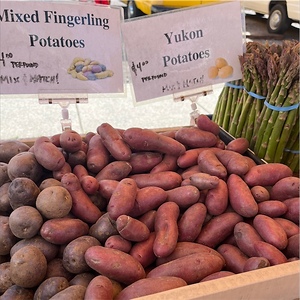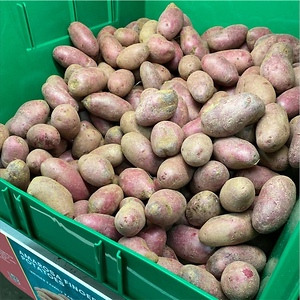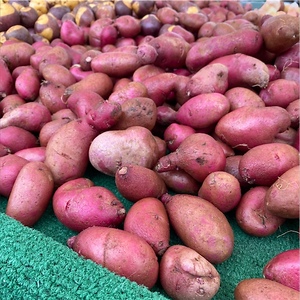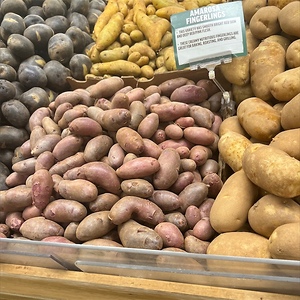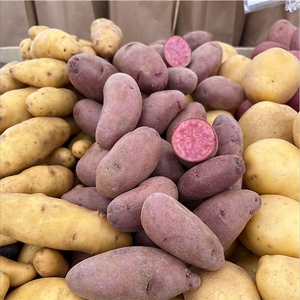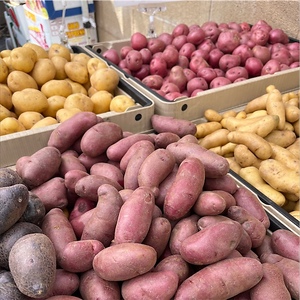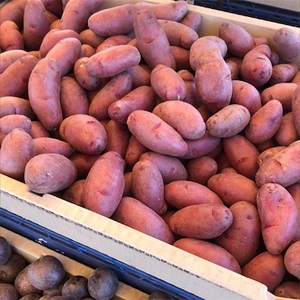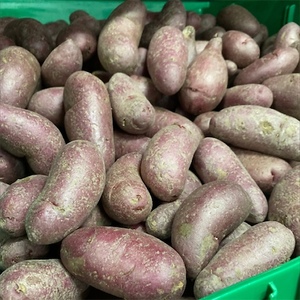


Amarosa Fingerling Potatoes
Estimated Inventory, lb : 0
This item was last sold on : 03/12/24
Description/Taste
Amarosa fingerling potatoes are small in size and are oblong and slender in shape. The thin skin is smooth with a deep red to burgundy coloring with some brown spots and patches. There are also a few, shallow eyes and lumps scattered across the surface. The flesh is firm, dense, and marbled with light pink and red. When cooked, Amarosa fingerling potatoes have a velvety texture with a sweet and creamy flavor.
Seasons/Availability
Amarosa fingerling potatoes are available in the late summer through winter.
Current Facts
Amarosa fingerling potatoes, botanically classified as Solanum tuberosum ‘Amarosa,’ are a new variety that was released in 2010 and belong to the Solanaceae or nightshade family. The Amarosa fingerling potato gets its name because of its narrow, finger-like shape. This potato is harvested in the late summer and bears prolifically, producing as many as thirty tubers per plant. The Amarosa potato is known for its vibrant red to burgundy hues and holds its color when cooked adding unique shades to dishes.
Nutritional Value
Amarosa fingerling potatoes are high in potassium, iron, antioxidants, and vitamins C and B6.
Applications
Amarosa fingerling potatoes are best suited for cooked applications such as boiling, baking, roasting, sautéing, and grilling. The Amarosa potato’s brilliant pink shade holds up beautifully when cooked and can be cubed and roasted, made into potato chips, or roasted and smashed. Amarosa fingerlings can also be incorporated into salads and pair well with balsamic, garlic, bacon fat, onions, tomatoes, and shallots. They will keep up to four weeks when stored in a cool, dry, and dark place.
Ethnic/Cultural Info
Potatoes are one of the largest agricultural products produced in Oregon. To meet the competitive nature of the industry, the Amarosa fingerling potato was created and then licensed to the Potato Variety Management Institute, a nonprofit organization that works with the Tri-State breeding program. This license gives breeders up to twenty-five years of exclusive propagation control under the Plant Variety Protection statute and prevents varieties such as the Amarosa fingerling from being overproduced and saturated in the market.
Geography/History
The Amarosa fingerling potato was developed by the Tri-State Potato Breeding Program in Oregon and began with a cross made in 2000. It went through years of trials and had to undergo a strict evaluation system in Oregon, Washington, and Idaho before being released in 2010. Today Amarosa fingerling potatoes can be found at specialty markets across the United States.
Recipe Ideas
Recipes that include Amarosa Fingerling Potatoes. One



